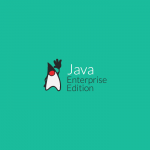- The EJB 3.0 local client view is based on a plain old java interface (POJI) called a local business interface.
- A local interface defines the business methods that are exposed to the client and that are implemented on the bean class.
- Although this separation of interface and implementation is a well-accepted approach to application design, the separation sometimes is unnecessarily cumbersome for very fine-grained components with closely coupled clients that are collocated in the same module.
- The EJB 3.1 specification addresses this by making local business interfaces optional. The result is the no-interface local view.
- The no-interface view has the same behaviour as the EJB 3.0 local view. However, a no-interface view does not require a separate interface, that is, all public methods of the bean class are automatically exposed to the caller.
- By default, any session bean that has an empty implements clause and does not define any other local or remote client views, exposes a no-interface client view.
- For example, the following session bean exposes a no-interface view:
package com.ibytecode.businesslogic;
import javax.ejb.LocalBean;
import javax.ejb.Stateless;
@Stateless
@LocalBean
public class FirstBean {
public FirstBean() {
}
public String sayHello() {
return "Hello";
}
}
- The client of a no-interface view always acquires an EJB reference — either through injection or JNDI lookup.
- The only difference is that the Java type of the EJB reference is the bean class type rather than the type of a local interface. This is shown in the following bean client:
public class EJB31ServletClient extends HttpServlet {
private static final long serialVersionUID = 1L;
@EJB
FirstBean bean;
public EJB31ServletClient() {
super();
}
protected void doGet(HttpServletRequest request,
HttpServletResponse response)
throws ServletException, IOException
{
PrintWriter out = response.getWriter();
out.println(bean.sayHello());
}
}
- Note that even though there is no interface, the client cannot use the new() operator to explicitly instantiate the bean class.
- That’s because all bean invocations are made through a special EJB reference, or proxy, provided by the container.
- This allows the container to provide all the additional bean services such as pooling, container-managed transactions, and concurrency management.
Refer this page for complete code.

